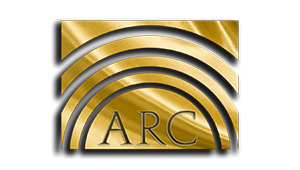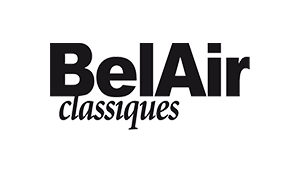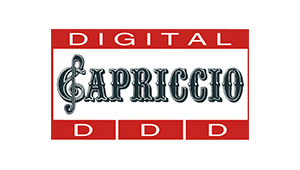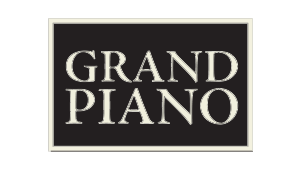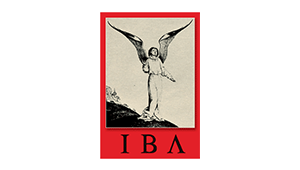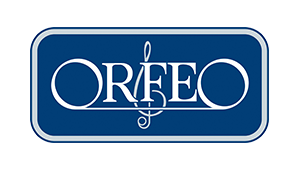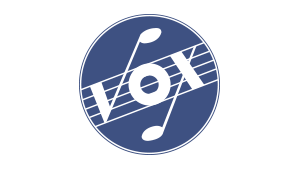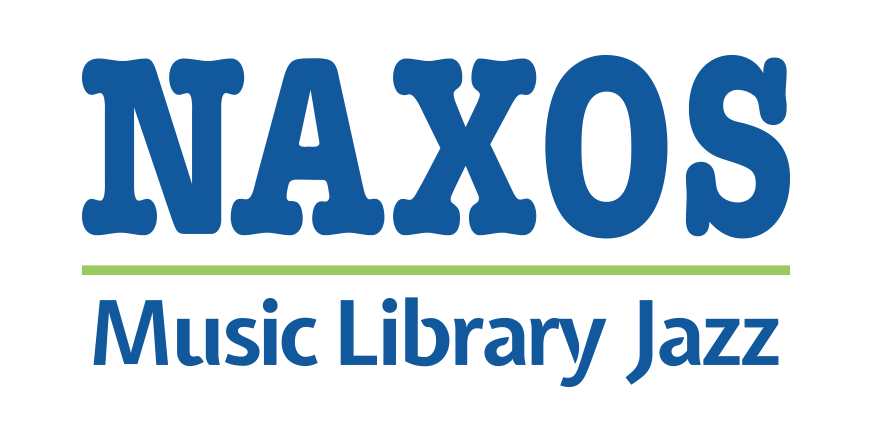
Photo: Anita David
As a freelance musician in Los Angeles, I drive all over town to play many different kinds of live music and recorded music in all sorts of places. Much of the music I play is classical (I’m the principal bassoonist for L.A. Opera), but I have also played movie soundtracks, jazz tunes, folk songs, various kinds of rock and pop, joke music, and even traditional West African drumming. I also compose music, teach music, and write about it. Whenever I can, I talk to audiences about the music they will hear.
If asked about my favorite music, I’d have to say “live music.” No matter what the style, I love seeing listeners and performers get together.
Over the years I have noticed that many otherwise stout-hearted music lovers are frightened of classical concerts. I don’t blame them! Concerts, like other activities, can be baffling if you don’t know what’s going on. (Sports can be just as baffling. I’m still trying to figure out how, in the middle of a baseball game, when everybody is talking and eating hot dogs, and nobody is watching the game, all of a sudden everybody—except me—knows to leap to their feet and pay attention.)
This little book is meant to make concert-going less baffling. Let me know if it helps! You can contact me through my website www.johnsteinmetz.org.
About the Illustrator
John Minnion has been a concertgoer since, as a student in the late Seventies, he discovered the symphonies of Gustav Mahler at London’s Royal Festival Hall. From that moment he has believed music to be the most beautiful thing in life, even more beautiful than cricket, and spends many hours listening to it. He even produces concerts himself, for the all-female early music group Fifth Element. Having teenage sons to support, he is also a freelance illustrator who has worked for many magazines and newspapers. He has caricatured over 400 composers, many of them on commission from Naxos.
Acknowledgements
Many thanks to Klaus Heymann, who had the original idea to provide a pamphlet for new concertgoers. Thanks to John Minnion for drawings with attitude. Thanks to Naxos of America for running with Klaus’s idea, to Matthew Whittier and Collin Rae for producing this new edition, and to all the organizations who have made use of the booklet. I am grateful to the many musicians and listeners who have shared their questions and answers about concerts over the years.
And thanks to you for reading this far (even if you opened to this part first).
Hearing live music is one of the most pleasurable experiences available to human beings. The music sounds great, it feels great, and you get to watch the musicians as they create it. No matter what kind of music you love, try listening to it live.
This guide focuses on classical music, a tradition that originated before recordings, radio, and the Internet, back when all music was live music. In those days live human beings performed for other live human beings, with everybody together in the same room.
When heard in this way, classical music can have a special excitement. Hearing classical music in a concert can leave you feeling refreshed and energized. It can be fun. It can be romantic. It can be spiritual.
It can also scare you to death.
Classical music concerts can seem like snobby affairs full of foreign terminology and peculiar behavior. It can be hard to understand what’s going on. It can be hard to know how to act.
Not to worry. Concerts are no weirder than any other pastime, and the rules of behavior are much simpler and easier to understand than, say, the stock market, football, or system software upgrades.
If you haven’t been to a live concert before, or if you’ve been baffled by concerts, this guide will explain the rigmarole so you can relax and enjoy the music.
How to Use this Guide
This is supposed to be about enjoyment, so please read only the parts you want to read. Use whatever is useful, and by all means ignore anything you feel like ignoring!

Classical music concerts can seem intimidating. It seems like you have to know a lot. What if you don’t understand the music? What if you don’t know how to listen correctly? What if you don’t “get it”?
The good news is this: there is no right way to listen, there is no correct experience to have, there is no one thing to “get.” Understanding is not required. Your job is not to be an expert on the music. Your job is not to be a perfect listener.
Your job is very simple:
Be affected by the music.
That’s it. That’s all there is. Because you are unique, and because your collection of experiences is unique, the music will affect you differently than it will anybody else. It may affect your emotions, your thoughts, your spirit, your body—any part of you. The same music may affect you differently at different times.
Music is meant to trigger reactions, invite reflection, awaken feelings, activate memories, and touch the heart. So just let yourself be affected.

Of course your knowledge of music, and your experience with it, influence how you are affected. If learning something about the music makes its effect more powerful, then by all means learn more. If repeated listening helps you to be more and more affected by a piece, then by all means listen to the music a few times before coming to the concert. Whatever helps you be affected is good to pursue. If it doesn’t help you, or if it gets in the way of your enjoyment, then don’t do it.
A wonderful and mysterious thing about live concerts is that everybody comes to be affected together. Everybody onstage and everybody in the audience shares in the same experience, each of us in our own unique way.
CHOOSING A CONCERT
There are lots of kinds of concerts. How do you pick one? First of all, you have to find out what’s going on.
Ask around: Word of mouth is one of the best ways to learn about concerts. Ask friends and fellow music lovers what’s coming up, what musicians and groups are good to hear, which locations are the most enjoyable or convenient. Word of mouth is the only way to find out about the many unpublicized classical concerts that pop up in homes, at parties and celebrations, or at other private events.
Internet: The Internet is overflowing with information about concerts. Concert halls and music organizations post their schedules online. Newspaper and ticket agency web sites list upcoming concerts. Performers and composers have web sites with performance schedules. Some music blogs list upcoming events. Music web sites provide links to other music sites. In some cities, music organizations, arts agencies, or music-loving individuals post concert calendars online. Search the Internet for a concert location, a performer or group, a music organization, or even a piece of music that you want to hear. Or try searching for “concert” and the place where you live.
Newspapers: Most newspapers publish listings and advertisements for upcoming concerts. Check the Sunday paper for a list of the week’s concerts. Sometimes the Thursday or Friday paper will have a list of weekend events. Weekly papers often include calendars of coming events.
Radio announcements: If you listen to a classical or public radio station, you’re familiar with their announcements of upcoming events. Some stations read a calendar of events; others broadcast interviews with performers who are about to perform locally. Sometimes a station will play recordings of music that will be heard in concert. Call your local station and ask them when you can hear information about live concerts. Don’t be shy—public stations like to hear from the public!
Season brochures: Many concert-giving organizations publish a brochure promoting all their concerts for the season. Usually a season is like the school year: it starts in the fall and ends in the spring. Some organizations have summer seasons, or produce special festivals that run for a shorter time.
Request a brochure by emailing or phoning, or via the organization’s web site. They will be delighted to add another name to their mailing list! (If you want a brochure but don’t want to be on the mailing list, be sure to tell them.)

Mailing lists: In some cities individuals or organizations offer calendars of coming events via email or newsletter—look for these online, or check with the local arts council or arts agency.
Concert-givers maintain mailing lists for sending emails, brochures, newsletters, reminders about coming events, special ticket offers, and access to special events. Sign up online, by phone, or at concerts.
Musicians-in-training: Musicians learn to perform by performing, so there are always concerts by young musicians. These events may not be widely publicized, but usually the public is welcome. Look for concerts at college and university music departments, at high schools, at music schools, and at music stores. Your area may have a youthorchestra or youth choir. Local music teachers present recitals by their students. Summer music camps give end-of-session concerts. Special institutes and workshops for training young professional instrumentalists, dancers, or singers usually present public concerts.
Community musicmaking: Some churches and temples have excellent music departments. You can hear beautiful live music in their services and at special concerts.
Your community may have a community orchestra, band, or choir. This community ensemble may consist entirely of amateur musicians making music for their own pleasure, it may include some professionals to bolster the sound, or it may be a professional group supported by the community.
Other concert opportunities: College classes about music (often called “Music Appreciation”) sometimes use live music. Signing up for this kind of class can be a great way to listen and learn.
Sometimes professional groups allow listeners to attend a rehearsal. Other organizations will invite you to attend special presentations or open rehearsals if you make a donation.
You never know where a classical concert might crop up. Opera has been presented on farms in rural areas. Chamber music is heard on shipboard on special cruises. Choruses invade shopping malls. Keep your eyes and ears open.
When Concerts Happen
Classical music concerts can happen at just about any time, so pick the time that’s best for you. There are more concerts on weekends, but in many cities you can find a concert almost every night of the week. Some downtown areas have special lunchtime or early-evening concerts to fit the urban work schedule. There are even some breakfast concerts!

Student concerts in music departments may happen in the afternoon or evening, and sometimes even in the morning. Concerts for families happen on weekends. Other children’s concerts happen during the school day, when performers visit a school or when children visit a concert hall.
The two most common starting times for concerts are in the evening, about eight o’clock, and in the afternoon, at two or three.
How Long Does a Concert Last?
Concerts come in many different sizes, but most last between ninety minutes and two hours. This includes an intermission—you won’t be sitting there listening the whole time.

Noontime concerts can be as short as forty-five minutes, and children’s concerts are short, too. Some concerts last longer than two hours, as do many ballet and opera performances. Sometimes there is more than one intermission. Marathon concerts, celebrating a single composer or some other unifying idea, can last for many hours, sometimes continuing all night long.
You may be able to find out the length of a concert by checking the web site or other publicity. Sometimes the only way to find out is to call. If the box office doesn’t have the information, call the administrative office.
KINDS OF CONCERT
A Recital usually shows off one particular musician, frequently a pianist or somebody accompanied by a pianist. There are other kinds of recitals, though: a Duo Recital, in which two people share equal billing, or a recital by a group.
Chamber Music is generally a small group of musicians performing without a conductor. The String Quartet (two violins, a viola, and a cello) is probably the most popular combination. Another popular grouping is a Piano Trio (not three pianos, but one piano playing with a violin and a cello). There are lots of other combinations: wind groups, vocal groups, percussion groups, mixed groups. Often one group will play a whole concert by itself, but some chamber music concerts include a few different combinations of players and/or singers.
A Chamber Orchestra is a small-sized orchestra, from ten to forty players. The orchestra will vary in size depending on the music being played. Some chamber orchestra concerts use only string instruments, but often there are other instruments as well. Usually chamber orchestras are led by a conductor, but there are some exciting exceptions.
A Symphony Orchestra (or Philharmonic Orchestra) is a large orchestra—it may have eighty or more players, with all the families of instruments: strings, woodwinds, brasses, percussion, and often harp and piano. An orchestra of this size has a conductor, and usually will feature a guest artist to play or sing with the orchestra. Sometimes a chorus is added.
Choral Music has a wonderful variety. Some is sung a capella, without any accompaniment—by human voices alone. Other choral music is accompanied by piano, or by groups of instruments, or by an entire orchestra. Choirs range in size from chamber music groups of three or four people to huge choirs of more than a hundred.
Opera and Dance have visual and theatrical elements along with the music. The music might be played by a full orchestra, or it might be played by a smaller group, by a piano or two, or by a pre-recorded tape. Be sure to find out whether or not the music will be live!
Children’s Concerts and Family Concerts are designed to be fun for children; they are shorter, and happen during the daytime. Usually the conductor or an emcee talks about the music.
Pops Concerts feature lighter classics and popular music. Sometimes a celebrity from the popular music world is a guest artist.
Sing-along Concerts invite audience participation in a choral work like Handel’s Messiah.
House concerts are wonderfully intimate performances for a small audience in a private home. Some organizations put on house concerts as fundraisers or as thank-you events for donors and supporters. A few organizations specialize in house concerts, and some music lovers build special concert rooms for their houses.
Some performers use Period Instruments. Musical instruments and styles, like everything else in this world, keep changing. In period instrument groups, performers use the kinds of instruments, and the techniques of playing and singing, that were in use when the composer wrote the music.
STYLES OF PRESENTATION: FORMAL, INFORMAL, AND BEYOND
Some people prefer “formal” concerts, where everybody dresses up, the musicians just play the music, and the audience just listens. Fans of this kind of presentation find that it helps them to focus on the music.
Others discover that another style of presentation suits them better. Nowadays concerts present music in a variety of ways and offer a range of formality and informality.
Every aspect of a concert can be varied: the kinds of music, the dressiness of clothing, the interactions between musicians and audience, the appeal to other senses, the kinds of settings, the technologies used, the kinds of social interaction.
A classical concert may include wildly different kinds of music. Performers may talk about the music, perhaps demonstrating certain features. Listeners may have opportunities to ask questions or make comments. The concert may be combined with a meal or other social event. Audience members may be invited to play an instrument, try a dance movement, or sing the main melody. The concert may take place in a relaxed environment like a club or living room, or in a ballroom, a tent, or a wilderness amphitheater.
Concerts for singles combine music and socializing. Lecture-concerts and “informances” combine music and learning. Theatricalized concerts combine music with actors, lighting, costumes, and other effects. Conversation-concerts combine music and discussion. Other concerts combine music with wine, with snacks, with art, or with film or video.
New technologies may project words, amplify sounds, provide big-screen close-ups, offer hand-held commentary, or facilitate audience participation. Old technologies may contribute candlelight, incense, historical instruments, or period costumes.
The different ways of presenting music have no standardized names, but web sites, brochures, and advertisements often describe concert formats, giving you choices about how to experience live music.
BUYING A TICKET
When to Go
Some concerts happen only once, so you don’t have any choice about when to go. But operas and big-city symphony concerts are performed more than once, so you can choose a date and time. This is completely up to you—trust your instincts. Ask around about the character of the different audiences, to find out which performance might suit you best. The Saturday night audience can be quite different from the Sunday afternoon audience.
If you can, choose a time when:
- you won’t be exhausted.
- you can get to the concert without having to rush.
- you’re likely to be in a receptive mood.
Getting Answers About a Concert
Q: Where should I park?
Q: What about handicapped access?
Q: How long is the program?
Q: Will the performers sign autographs?
If the web site or ticket office can’t answer your questions about a concert, try calling the organization’s Community Relations Manager, Communications Director, or Marketing Director. You may have to call a different number: the main office instead of the ticket office.
People who work for music organizations are used to answering questions and explaining things. If you reach a person who can’t answer your questions, ask to be referred to somebody who can.
Some organizations may even be able to give you a list of restaurants near the concert, so you can make your musical evening a night on the town.
Where to Sit
Everybody’s taste is different. Do you like to sit up close, where you can watch the musicians’ faces and examine their shoes? Do you like to sit in the middle, where the sound is more blended together? Do you like to sit in the back, where you can get the big picture? Do you like to be way up in the top balcony, up near the ceiling, looking down on everyone? Or do heights make you nervous?
In many concert halls, the cheap seats have the best sound, because the music floats straight up to the balcony. Sometimes you can sit extra close to the musicians, in seats on the stage or just behind it.
Don’t hesitate to ask the ticket seller’s advice about where to sit. Sometimes they’ll have a good suggestion for you.
By asking around, you can learn whether a theater has especially good seats to seek out, or especially bad seats to avoid.
You might like to try out different places to sit, and find out what you prefer.

When to Buy
Some concerts sell out quickly, so you have to buy tickets as soon as they go on sale. But for many events, you can wait until concert night to buy your ticket. There are some disadvantages to waiting, though: you may have to stand in line, you may not have a good choice of seats, and you may not get a ticket at all.
If you’re nervous about missing out, then buy your tickets early. On the other hand, if you’re nervous about advance planning, then buy your tickets later.
How to Buy
You can buy concert tickets in many ways: in person, online, by phone, by mail, or by fax. Every organization offers its own set of ways to buy. Internet or phone sales may add a service charge to the ticket price.
When you buy your ticket, you may have a chance to select your seat. A diagram of the concert hall or theater may be available to help you decide where to sit. Many theaters post seating diagrams online, and some phone books include theater seating charts.
Sometimes instead of choosing a particular seat you will choose a section of the theater or a ticket price. You will get “the best available seat at that price.” In this case a computer or a mystery person will choose your seat for you from what is available.
When you order by phone, the number may connect you to the organization’s ticket office, or it may connect you to a ticket service that sells tickets to many different events. Ticket services are convenient, because they have more than one outlet and they can also be reached online or by phone, but you will pay extra for this convenience: ticket services make their profit by charging you fees. The fees can increase the cost of your concert by several dollars per ticket.

If you buy your tickets well in advance, you can order them by mail. Season brochures often have a reply form with space for you to list the concerts you want to attend and the seat price you desire.
Usually you can’t pick your seat with this method, but you can specify a section of the theater.
If you buy your ticket in person, the salesperson will hand it to you. If you buy your ticket by Internet, phone, or mail, the ticket will be mailed to you or held at the box office, where you can pick it up on concert night. In some cases, online tickets get printed on your own printer.
Refunds!
Make your selection carefully! Tickets are usually non-refundable.
What If You Can’t Use Your Ticket?

Sometimes it does happen: your plans get disrupted, and you can’t attend the concert. What do you do with your ticket?
Most tickets are non-refundable, so you probably won’t get your money back. It never hurts to ask, though. Sometimes you can get a refund or a credit for a future concert. If you are a subscriber, you might be able to exchange your ticket for another time. Call the box office to check their policy.
If you can’t get a refund or an exchange, then you can a.) give your ticket to somebody., b.) sell it to somebody, c.) call the box office and ask whether you can donate your ticket back and take a tax deduction for the price of the ticket.
How Much Will It Cost?
Ticket prices vary from zero to more than a hundred dollars. Large theaters have more than one ticket price. In general, the seats get cheaper as they get farther from the stage. In some concert halls, the cheapest seats have the best sound. Web sites, concert brochures, and advertisements often list ticket prices, or they’ll give a number to call for more information.
Reserved and Unreserved Seats
Usually when you buy a ticket to a classical music concert, your ticket says exactly where you will sit. This is called “reserved seating.”
Sometimes, though, your ticket does not specify a particular seat. In that case, people arrive at the theater and choose their seats after being admitted. This is “unreserved seating” or “open seating”. Be sure that you know which kind of ticket you are buying! If seating is unreserved, you may want to arrive early to claim a good seat.
Subscriptions
Organizations that give more than one concert in a season usually encourage people to buy a package deal, a “subscription.” It’s similar to subscribing to a magazine: If you buy several concerts at once, you get a price break. Another advantage is that package deals go on sale before single tickets, so if you subscribe you can get better seats, and you can be sure to get a ticket to popular events. Subscribers often get special treatment, such as preferred seating for other events, special subscriber-only concerts, and so on.
Usually the season brochure offers several different package deals, for different wallets and different tastes. Each package is called a “series.” Consult the brochure to see what choices are offered. If you have any questions—or even the tiniest doubt—call the number listed in the brochure. They want to sell you a subscription, so they’re probably going to be helpful!
Some organizations let you design your own series. You pick a certain number of events from the season, choosing the concerts you want and the dates that are best for you.
When you subscribe, you choose your concerts far in advance. If you have a scheduling conflict when concert night arrives, many organizations will let you, the valued subscriber, exchange your ticket for another date.
Single Tickets
If you like to wait until the last minute to choose your concerts, or if you only want one concert, then you’ll buy a “single ticket.” These go on sale after the subscriptions, so you’ll choose from the seats that subscribers didn’t buy.
Of course many concerts are one-time-only events that are not part of any subscription series. In such cases, the only kinds of tickets available are single tickets.
Partial Concerts and Partially-Live Concerts
New ways of selling tickets keep evolving. A brand new approach, still quite rare, is to sell tickets to part of a concert. Concertgoers can buy a ticket to half of a concert or to one part of an opera or ballet.
Another approach lies between live music and recorded music, in a world of semi-live events: streamed concerts on the Internet, live performances on TV and radio, unedited recordings and videos of live concerts. Some organizations now transmit high-definition video of live performances to movie theaters in other cities, giving listeners a new way to attend a distant performance. While not really live concerts, these semi-live events let audiences see and hear performances that they otherwise would miss.
Discounts and Rush Tickets
Many organizations offer discounts to senior citizens and to students (you’ll need an I.D.) Discounts are often available for groups.
For some events, low-priced “rush tickets” become available late on the day of the performance. This is a way of selling those last few unsold tickets by making them available at a discount. Sometimes rush tickets are only available to students; in other cases they are available to anybody who shows up. You have to come in person to buy rush tickets.
SECTIONS OF THE THEATER
The Orchestra. The main floor of the theater is called the Orchestra. This can get confusing if you’re going to an orchestra concert and your seat is in the Orchestra. That doesn’t mean that you’ll be seated onstage with an instrument in your hands! In some venues this area is called the Stalls.
Balconies. In some theaters the balconies have special names like Loge, or Founders’ Circle, or Dress Circle. Sometimes the front part of a balcony has one name and the back part of the same balcony has another name. These names, and what they mean, are different in every theater.
Boxes. Boxes are small booths for a few people, usually located in one of the lower balconies. Some outdoor amphitheaters have boxes close to the stage. Boxes may have extra privacy. Not all theaters have them.
Standing room. In some theaters, you can buy a cheaper ticket that entitles you to stand in the back, behind the last row of seats. If you’re hardy, this can be a great way to see operas.
Special seating. Occasionally, when the performing group is small and the audience is big, extra chairs are set up on the stage, surrounding the musicians. If you like to watch performers up close, this can be a great place to sit.
Some concert halls are designed for this kind of wraparound audience; they have permanent seating behind the musicians.
Some theaters provide spaces for wheelchairs. Call the box office or the theater to arrange access; space may be limited.
Visual obstructions. Some theaters have a few seats with only a partial view of the stage. Maybe there’s a handrail or a pillar in the way, or maybe the architect was a nut case. These obstructed seats are sometimes extra cheap.

GETTING READY
Getting to Know the Music
Some people enjoy concerts more if they get involved with the music beforehand. You know yourself best: what would help you be affected by the music?

Many people like to listen to the music before the concert. This can be a lot of fun, too. Find a recording of one of the pieces at the library, in a friend’s collection, online, or in a store. Play the music in your kitchen, or in your car, or just sit down and listen. Try listening to different recordings of the same music—the differences might surprise you!
Some people increase their enjoyment by reading a biography of the composer, by finding out more about the performers, or by looking into the musical style or historical period. The concert’s web site may provide background information, recommended reading, or links to relevant web sites. You can search the Internet to learn more about pieces, composers, or performers.
Of course, many people enjoy concerts just fine without any special preparation—you don’t have to be an expert on the music. But more and more concertgoers are finding that they can deepen their experience by making friends with the music beforehand.
What to Wear
Alas, there is no simple answer to the question of what to wear to a concert, because every concert has its own atmosphere and style. Opening night at the opera might require formal dress, but most concerts are far less formal. At some performances you’ll be out of place if you dress up too much!
Usually you can wear whatever you want. Because people will be wearing all manner of clothes, you’ll fit in no matter what. If you enjoy dressing up, take advantage of the occasion! If you hate dressing up, wear comfortable clothes.
If you are worried, put on what you would wear to a business meeting or, better yet, to a wedding—after all, a concert is a kind of celebration, so wear something festive! Evening concerts generally inspire dressier outfits than daytime events.
To get more specific wardrobe advice, ask around, or call the organization and ask what people tend to wear.
Because concerts squeeze lots of people into one room, it’s best not to wear strong fragrances.

Preconcert Lectures
Many organizations offer lectures immediately before their concerts. These “preconcert lectures” include information and insights about the composers and the pieces, along with some musical examples.
You may also hear from performers and composers themselves. Call the organization or check its web site to find out about preconcert lectures.
GETTING THERE
Being on Time

You have to arrive on time. If you are late, you won’t be allowed in until there’s a pause in the music. In some situations—especially when the music has no pauses—no one is admitted after the music starts.
Even more important, if you rush in late you’ll be in no condition to settle down to the task of listening to the music. Get there early enough to enjoy the atmosphere, to look at the theater, and to find your seat and get ready for the music.
If you do arrive late, an usher will help you get to your seat at an appropriate time.
Finding the Theater
If you haven’t been to the theater before, leave lots of extra time to find it. If you bought your ticket online, check the web site for a map and directions, or check the theater’s web site. Season brochures often include a map. You also can call the office for directions. Check a city map before you go, though. Sometimes the people in the office, who have been to the concert hall a zillion times, forget what it’s like to be a first-timer. And sometimes the Internet gives crazy directions.
Public transportation often serves concert halls very well. Just be sure that the buses or trains will be running when the concert is over.
If you drive, remember that urban concert halls can be hidden in a maze of one-way streets. Allow extra time for solving the maze!
Parking
Parking can be expensive—sometimes parking the car costs more than the concert! Parking can be scarce, especially at small recital halls and alternative spaces like art galleries and dance studios. Parking can be distant, especially at universities, where walking from the parking structure to the concert can feel like going on safari.
Check the web site or season brochure for parking information; there might also be a map showing where to park. Or call the office. Don’t be shy; they get lots of calls about this sort of thing. It’s part of their job to help you, the valued concertgoer, find a place to park.
Allow some extra time for parking, and bring some extra money to pay for it. After the concert, don’t be in a hurry to get home afterward. When an entire audience is trying to exit a parking lot at one time, it’s not a pretty sight. Be patient.
The Box Office
If you don’t have your ticket yet, you will need to find the box office. Usually it’s in front of the theater or in the lobby, but at some theaters architects have cleverly hidden the box office. Just ask where it is, and try to enjoy the adventure of finding it. The box office may have several different windows. If your ticket is being held for you, go to the “Will Call” window. To buy a ticket, look for a window that says something like “This Performance.”
Finding Your Seat
Your ticket will admit you to the concert hall, and, if seating is reserved, it also indicates where you are to sit. Show your ticket to an usher, who will help you find your seat.
“CONCERT MANNERS”
There’s nothing mysterious or difficult about how to act at a concert. It’s mostly just common sense: the music needs silence, so the audience contributes silence; both the musicians and the audience want to concentrate on the music, so listeners stay put during a performance.
One aspect of concert manners can be a bit confusing: knowing when to clap. At most other kinds of concerts, people clap whenever the music stops, but in classical music you wait to clap until the very end of a piece.
The Naxos Complete Guide to Good Concert Manners
When music is playing:
- Be quiet.
- Stay put.
- Don’t clap until the whole piece is over.
You don’t have to sit like a statue. You can breathe; you can shift your body in your chair. You can respond to the music, but your response will be inward. You might experience intense feelings while outwardly sitting quite still. This inwardness is part of the style and vibe of classical music. (Nowadays some classical events welcome more outward response, but most classical concerts cultivate an inner experience—emotion without motion.)
The basic idea is to help each other focus on the music. Making noise, fidgeting, or walking around can distract other listeners, and it may interfere with the musicians’ concentration. We’re all used to talking and moving around while the TV is on—it’s easy to forget that at a concert the performers can see and hear the audience! Your attention and silence will help the musicians to perform a better concert. They can feel your involvement, and it inspires them to give their best.
When to Applaud
A common concern of listeners at classical concerts, and one of the chief obstacles to enjoying the music, is the dreaded Fear of Clapping in the Wrong Place. It’s no wonder the audience is afraid: Classical musicians don’t usually make clear what they expect of the audience.
In other kinds of music, the audience claps whenever there’s an ending—if the music stops, people applaud. But in classical music, one piece may have several parts, each with its own ending. You are supposed to wait to the very end of the very last ending before you clap.
This can be tough. Sometimes you can’t tell if the piece is over. Sometimes you get so carried away by the music that you really want to clap. Sometimes you’re so enthusiastic after a section ends that you’ve just got to clap for the musicians.

Don’t do it.
I know it seems cruel to squelch that urge to applaud, but please wait for the very end of the whole piece.
How do you tell when a piece of music is really over? Quite often a classical piece has several sections, each with its own ending, and it can be hard to tell which ending is the final ending, the one you’re supposed to clap for. How do you know when it’s really the end of the whole thing?
When in doubt, simply wait until lots of other people are clapping.
By the way, this tradition of waiting to applaud until the very end of a piece is relatively new. In other times and places, audiences clapped throughout the music. Mozart, for instance, was proud to report in a letter to his father that there had been wild applause during his latest symphony. So if you feel an urge to clap before the very end of a piece, you’re in tune with an authentic historical tradition.
One more thing about clapping: snobs might try to make this into a really big deal. Snobs are only too ready to sneer at people whose enthusiasm results in mis-timed applause. Such snobbery should be pitied but ignored.
Sounds that Get in the Way
- Mobile phones, pagers, and beeper watches (Turn them off!)
- Talking (You’d be surprised how many people get so excited that they forget they’re not watching TV.)
- Whispering (You’d be surprised how many people think whispering is silent.)
- Unwrapping anything
- Coughing (If you have a cough, then bring cough drops—unwrap them beforehand, please!—or take cough medicine.)
- Squeaking a chair
- Opening a purse
- Jingling coins
- Rustling the program
- Saying “shhh”

Activities that Get in the Way
- Texting
- Fidgeting
- Passing notes
- Adding or subtracting clothes
- Messing around with belongings
- Eating
- Entering or leaving
- Walking around
You don’t have to be tense or uptight through the concert. You don’t have to hold your breath! But do help to create a silence in which the music can thrive, and a stillness that helps everyone to focus on that music.
When to Applaud, Part 2
In some situations you can clap whenever you like something. This is often the case at opera and ballet. The audience may applaud the lights dimming, the curtain opening, the first appearance of a major star, an impressive dance move, a lovely song, or a beautifully designed backdrop.
But it’s not like this at every ballet and opera. If you get confused (and I get confused myself sometimes) just imitate the rest of the audience. And remember this: if you’re not sure when to clap, it’s not your fault. The performers are supposed to help you know when to clap, but they don’t always make it clear.
What about Children?

Concerts are not for everyone. Babies and little children, for instance, can’t be expected to follow the rules at a grown-ups’ concert. Leave them at home until they are old enough to understand how to behave. Even some adults can’t meet these standards of behavior. Some people can’t be quiet. Some people can’t stay in a chair. Some people snore. Use good judgment and consideration about whom you bring.
Legal Matters
At a concert you shouldn’t take pictures or make a recording, and don’t even think of making a video. It is distracting to do these things, and it is usually illegal. Besides, you are there to experience the concert, not to preserve it!
THE CONCERT RITUAL
Every kind of music has its rituals. We need ritual to help performers and audience get into a musical frame of mind, and to contain the power released by the music.
The rituals for classical music can be confusing. They have developed over hundreds of years, in many different countries, and date back to societies that were very different from our own. Concert rituals aren’t always the same, but here is an idea about what to expect: In an orchestra, the leader of the violin section is called the concertmaster. Often the concertmaster stays backstage until the rest of the orchestra is ready to begin. Then the concertmaster comes onstage and takes a bow as the audience claps. The concertmaster turns to the orchestra, a tuning note sounds, and the musicians tune their instruments. The audience should stay quiet during tuning.
Next the conductor comes onstage. As the audience applauds, the orchestra may stand up to share in the applause. The conductor shakes hands with the concertmaster as representative of the orchestra.
As the players sit back down, the conductor turns toward them (away from the audience), and begins the music. The conductor’s job is to direct the musical flow with gestures. (Most conductors use a little white stick called a baton, but some use only their hands.) You won’t see the front of the conductor again until the first piece is over. That may be a short time, or it may be more than an hour.
The music may start and stop a few times within one piece of music. The musicians may pause between big sections to refocus their energy or to retune before playing the next part. Eventually, when the whole piece is over, the audience claps, and the conductor turns toward the audience to accept the applause.
Then the conductor leaves the stage. If the applause keeps going, the conductor will come return to the stage. He or she may ask the orchestra or individual players to stand to share the applause. Then the conductor will exit again, but he or she will return for more bows as long as applause continues.
After all of this clapping and bowing, entering and exiting, the conductor finally ends up offstage, while the orchestra and audience get ready for the next piece. Sometimes some furniture has to be rearranged, or some players have to be added or subtracted.
Sometimes the stage crew has to rearrange furniture, or players have to add themselves in or take themselves out.

Eventually, when everybody is ready, the conductor will come onstage again to lead the next piece. If there is a featured soloist, he or she will walk onstage with the conductor, and you might notice the conductor staying a bit more in the background during the applause, allowing the soloist to be the focus of the audience’s attention.
Why do orchestras change size?
An orchestra is a flexible idea, not a standardized group of instruments. Today’s orchestras can expand or shrink in order to play music composed for the wildly different orchestras of different times and places. They can also meet composers’ needs for special instruments not normally part of an orchestra—such as saxophone, accordion, drum set, synthesizer, or guitar.
Chamber music rituals
In a chamber music concert or a recital, there is usually no conductor, so the musicians do all the bowing and walking in and out.
Rituals of Opera and Ballet
The orchestra for opera and ballet is usually not onstage, but in the orchestra pit in front of the stage. In this setting, the concertmaster doesn’t usually make a special entrance. After the orchestra has tuned, the audience claps for the arrival, in the pit, of the conductor.
Opera and ballet have lots of quirky rituals. The most surprising ritual is that the story may be interrupted without warning for the taking of bows. The performers may break character to accept the applause, or they may freeze while the audience claps, and then return to the action.
When the curtain comes down at intermission time, the main performers sometimes come through the curtain to take a bow.
Intermission
Most performances have an intermission in the middle, a chance for performers and audience to take a break. The musicians leave the stage; you may leave your seat. You will know that intermission is almost over when the lights dim in the lobbies, or when bells or announcements sound.
Giving and Receiving

If all the clapping and bowing at a classical concert seems peculiar and oldfashioned, it might help to think of a concert as an energy exchange. The musicians send out musical energy, which the audience receives. At the end of a piece, it is time for the audience to give something back by clapping, and time for the musicians to receive it, by bowing.
Standing Ovations, Shouting, Whistling, etc.
An audience can show extra enthusiasm for the performers by standing up while they applaud. You may shout “Bravo!” if you like. (To be politically and grammatically correct, shout “Brava!” for a female performer, and “Bravi!” [BRAH-vee] for a group.)
Booing
Nowadays people generally respond politely to classical music concerts, but just a couple of generations ago things were much wilder. A new composition could cause a riot, or its composer might be carried through the streets in triumph. Even today, singers at a certain Italian opera house have to be ready to dodge produce thrown by the audience.

READING THE PROGRAM
At most concerts, each listener receives a printed program that says what will happen. This program may be as simple as a piece of paper or as elaborate as a book. Look for the “program page” that lists the music to be played. (If the program is a booklet, this page is usually in the middle somewhere. Some booklets include programs for several concerts.)
Titles
Since classical music comes from different times and places, the titles on the program page will often be in foreign languages. You might encounter different ways of titling the same piece, and even different spellings for a composer’s name. (Classical music originated before the age of standardization, back when a word might have three different spellings on the same page!)
A piece might have a main title followed by a list of its sections, rather like a book’s name followed by its chapters.
Different kinds of titles
Naming the piece:
On Hearing the First Cuckoo in Spring
Belshazzar’s Feast
Quartet for the End of Time
Naming the type of piece:
Symphony No. 6
Concerto for Violin and Orchestra
Sextet in B-flat
Naming the expressive character:
Adagio misterioso (slow & mysterious)
Allegro (lively)
Traditional nicknames:
Brandenburg Concerto No. 3
“Eroica” Symphony
Personnel List
Orchestral programs usually list the players and the instruments they play. Sometimes the list doesn’t exactly match the players. There may be last-minute substitutions, or, for large pieces, extra players may have been hired. An orchestra’s string players may be listed in alphabetical order, not by where they sit.
It can be fun to match the list to the instruments and people you see on the stage. Many concertgoers enjoy learning to recognize different musicians and what they play.

Biographies
Programs often include information about the featured performers. This is where you find out where else they have appeared, what recordings they have made, and what honors they have received. Don’t expect to find many personal revelations; such biographies are usually written to impress you with the performer’s professional accomplishments. Many performers also have their own web sites, where you can learn more about them.
Program Notes
Some programs include short essays about the music, about the composer, or about the historical context. Some program notes describe what will happen in the music; some analyze the music or present historical background.
If information helps you enjoy music more, consider arriving at the concert early enough to read the program notes before the performance. Some organizations make their program notes available in advance of the concert, mailing them to ticket holders or posting them online. But beware: Although many program-note writers provide lively and insightful essays, some program notes might obstruct your enjoyment. If you don’t find the program notes helpful, just ignore them!

Pronunciation (don’t worry)
Classical music concerts are full of professional jargon, esoteric terminology, and foreign words. Don’t worry about how to say everything. Some of these words are pronounced differently in different places, anyway.
Program Guide Key
- There are three pieces in the concert.
- The first piece doesn’t have any separate sections listed, so it will probably be one continuous piece of music.
- The second piece is divided into three sections, or “movements.” Probably they will be separate and easy to count (so you’ll know know when to clap at the very end), but occasionally a composer pulls a trick and connects two movements without any silence in between.
These movement titles are the composer’s indications of the speed and character of each movement. The titles might be in any language, but most often they are in Italian, the first international language of music. - Five movements.
- “Op.” or “Opus” means “Work.” This is either the composer’s 63rd published composition, or the 63rd piece that he wrote.
- This is a catalog number. After Mozart died, a man named Köchel catalogued his compositions and gave each one a number, roughly in the order they were composed. A few other composers’ works have catalog numbers, usually with initials indicating who organized the catalog.
- “Lively”
- “Walking tempo but slow”
- “Rondo [see glossary] at the speed of a Minuet”
- The name of the soloist in this piece.
- For modern works, sometimes the year of composition is given instead of an opus number or catalog number.
- The first movement starts out “Slow,” but changes to “Lively.”
- “Walking tempo”
- “Majestic”
- “Scherzo” is a kind of movement [see glossary.] This Scherzo is to be played “Lively and furious.”
- “Finale: very lively”
INSTRUMENTS OF THE ORCHESTRA
Every orchestra is different, but here are some instruments you’re likely to see:
String family
Violin
Viola [vee-OH-lah]
Cello (violoncello) [CHEL-low]
Bass (double bass, contra bass) [rhymes
with “face’]
Woodwind family
Flute, Piccolo
Oboe, English horn
Clarinet, Bass clarinet
Bassoon, Contrabassoon
Saxophones
Brass family
Trumpet
Horn (French horn)
Trombone
Tuba
Keyboards and Harp
Celesta [cheh-LESS-tah]
Piano
Harpsichord
Organ
Synthesizer
Harp
Percussion family
Timpani (kettledrums) [TIM-pa-nee]
Snare drum
Bass drum
Cymbals
Tambourine
Triangle
Xylophone
Glockenspiel
Chimes
Marimba
Vibraphone (vibes)
plus other things to hit, scrape, and shake
Voice Types
Soprano (high female voice)
Mezzo-soprano (medium female voice)
Alto [contralto] (low female voice)
Countertenor (very high male voice)
Tenor (high male voice)
Baritone (medium male voice)
Bass (low male voice)
WAYS TO LISTEN
There are lots of things to enjoy at a concert, lots of things to pay attention to. Your job is to be affected by the music, but you can be affected by whatever most appeals to you, or by whatever grabs your interest. Here are a few choices for what to listen to. Choose whatever you like, switch as often as you want, and feel free to add to the list.
Some things to enjoy in classical music
- Loudness and softness
- Changes and transformations
- Recognition of something heard earlier
- Different speeds
- Instrument sounds
- Melodies
- Rhythms
- Patterns
- Terrific performing
- Ebb and flow of energy
- Musical conversation
- Moods and feelings
- Memories that get triggered
- Visual images that come to mind

What to Watch
A concert is an event for the ears, but there is plenty for the eyes, too. Watch the players and feel their energy and intensity; watch what they do to make their instruments sound in different ways. Watch as the music moves between players, or between groups of players. Watch the way the conductor controls events, or how he or she gives control to the musicians.
What if I get bored?
Don’t worry; it happens to all of us at one time or another. Sometimes you don’t connect with the music. It’s perfectly normal. If this happens, just choose one of the many ways of enjoying the music.
What if I don’t like the concert?
No one expects that you will like every moment of every concert. Remember, your job is to be affected, not to like everything.
Everybody’s taste is different, so a concert that is wonderful for one person might be awful for another. All you can do is let yourself be affected by whatever the music has to offer.

Evaluating the Concert
Human beings instinctively want to evaluate their musical experiences. Some music critics give the impression that the listener’s job is to pass judgment on the performance, and that the performer’s job is to try to get a good rating, like an Olympic ice skater.
Of course we all try to pick concerts we will like, and we all talk about what moved us and what didn’t. But don’t be fooled by all the judgment that surrounds classical music. The listener’s task is not to pass judgment; it is to be affected. Instead of asking yourself, “How good is this?” or “Do I like this?” you can ask, “What is happening now?”
Coping with Snobs
Snobs are everywhere, in every field. Baseball snobs sneer at neophytes who don’t know Ty Cobb’s lifetime batting average or Willie Mays’ hat size. Computer snobs roll their eyes if you don’t know ROM from RAM.
Classical music snobs can be some of the snobbiest snobs of all. They assert their superiority by showing off their knowledge and declaiming opinions. Often their snobbery masquerades as helpfulness, but snobs have a way of making ignorance appear to be shameful.
Nobody should feel ashamed of ignorance. If a classical music snob tries to shame you at a concert, don’t take it personally. They’re just showing off, and may be unaware of diminishing others.
Classical music has a reputation for snobbery, but in fact the audience is full of wonderful people who aren’t snobs at all, people who come to enjoy the beauty of the music. These people know that what really matters is your willingness to open your mind and heart to the music.

What if I don’t understand the music?
See “The Listener’s Job Description” at the beginning.
MEETING THE PERFORMERS
After concerts many performers make themselves available to meet the audience, sign autographs, and chat. Some members of orchestras and chamber groups really like to hear from listeners. Even some of the most famous conductors, singers, and instrumentalists may take time to meet listeners.
Of course not every musician is willing to meet the public, and sometimes another engagement prevents a performer from staying around after the concert. But it’s worth a try. Leonard Bernstein, for instance, would spend as much two hours greeting listeners after a concert. Whether or not the musicians are famous, this might be your chance to tell a performer or composer how the music affected you.
Some musicians sign autographs or recordings in the lobby at intermission or after the concert; some can be found backstage. Ask an usher where to meet the musicians, or look for the stage door or artists’ entrance. You may have to wait for a while, but the fun of meeting the performers can be worth it.

ESSENTIAL LIFE SUPPORT
Restrooms
Concert halls have restrooms, but sometimes they are far away from the music. If you arrive early at the concert, you’ll have time to find the restroom and plan a route from the auditorium. At intermission, be prepared to wait in line. For some reason, most concert halls don’t have enough restrooms to accommodate everyone quickly.
Drinks and Snacks
Some concerts have drinks and snacks on sale at intermission. Ask an usher where to go. In large theaters there may be a bar, and perhaps even a snack bar. Don’t plan on finding a meal at the concert, though. The food on sale is most often snack food and desserts.
Messages
If you expect a message while you’re at the concert, notify an usher. She or he will tell you what to do. You should silence any mobile phones or other electronic devices.
Special services
Modern concert halls are equipped to solve a variety of human mobility, hearing, and seeing problems. Tell the ushers what you need, and they’ll direct you to assistance. Some concerts offer childcare, so that your kids can play while you attend the concert.
A few common musical terms. Note: most of these words originated before the age of standardization. Spellings may vary.
Musical Forms (Kinds of Pieces)
Concerto [con-CHAIR-toe]
Music featuring one instrument or a group of instruments, usually playing with an orchestra.
Opera [AW-pruh]
A sung stage play, using music to propel the story and display characters’ emotions. Opera often uses two kinds of singing: recitative [reh-chih-tah-TEEV], speech-like recitation for dialogue; and aria [AH-ree-ah], song-like music for reflection and reaction.
Oratorio [o-rah-TOH-ree-oh]
Vocal soloists and chorus join an orchestra to tell a story in music, but without the staging and costumes of an opera.
Sonata [soh-NAH-tah]
A piece for a single instrument, for an instrument with piano, or for a small group of instruments, which draws out the capabilities of that instrument or combination.
Suite [sweet]
A collection of several movements, often dance movements.
Symphony [SIM-fo-nee]
The musical equivalent of a novel, meant to show off the many moods and sounds of the orchestra.
Overture [OH-ver-cherr]
A piece for beginning an opera, ballet, or concert.
Kinds of Movements
Movement
A piece of music within a larger piece, like a chapter in a book. Most symphonies, for instance, have several movements: each movement is in a different mood, and each has its own beginning and end.
Finale
A final movement. A finale might be any kind of movement: a rondo, a minuet, a theme and variations, or something else.
Minuet
Probably the most popular dance of all time, the Minuet has this rhythm: ONE, two three, ONE, two three (like a Waltz, but less swirling.) Many symphonies have a Minuet movement. A Minuet is really two dances: you hear the first dance, then a second dance with a different sound and feeling, then the first dance again. The Minuet is often called “Minuet and Trio,” because the second dance, the “Trio,” traditionally used a smaller group of instruments.
Rondo
A piece whose main melody keeps reappearing. Between sightings of the melody, other music takes over. When the melody returns, it is often in a sneaky, surprising, or entertaining way.
Scherzo [SCARED-so]
Beethoven and many later composers used Scherzos in their compositions instead of Minuets. Scherzo means “joke,” but the character of a scherzo movement is often ironic, turbulent, dark, or fierce.
Sonata (or Sonata-allegro) movement
A typical first movement of a symphony, concerto, or sonata, in which the composer introduces musical ideas at the beginning, then creates excitement and surprise by playing around with the ideas. Later, in a sort of homecoming, the ideas return in their original form.
Theme and Variations
The musicians play some music, and then present different transformations of that music—as though the music were trying on different costumes.
Other Musical Terms
Allegro Lively
Andante Walking speed; medium
Adagio Slow
Crescendo Getting louder
Diminuendo Getting softer
Largo Slow
ma non troppo but not too much
Moderato Moderate
molto very
Presto Very fast
Vivace Vivacious

A Few Resources for Further Enjoyment
MUSIC BLOGS discuss music, instruments, performers, gossip, and everything else about classical music. Visit the Naxos Blog to keep up to date with news, podcasts and lots of other great stuff about our artists and recordings.
MUSIC BOOKS on every aspect of music run the gamut from brief guidebooks to lavishly illustrated coffee-table tomes. MUSIC DICTIONARIES (see dictionary.naxos.com) come in many sizes, from pocket-sized booklets to encyclopedic multi-volume sets. Naxos Books include many exciting and informative titles about composers, musical periods and instruments.
Naxos Educational CDs uses the wealth of Naxos recordings combined with approachable, absorbing narrative, to broaden the understanding of musicians and their music.
Naxos Music Library provides online access to the entire Naxos catalogue by subscription.
Online music stores sell recordings, videos, and downloads; some provide excerpts for listening. Online video sites (see naxosvideolibrary.com) have huge collections of old films and new videos of musicians, past and present.
ORCHESTRA WEBSITES frequently offer educational features for children and adults, sometimes including videos, games, and recordings. Visit the ‘Orchestras’ section of our Artist Index to see what orchestras are available on Naxos CDs and DVDs as well as on the labels we distribute.
Our Artist Index and Composers Index are also good places to find recordings featuring particular musicians and particular musical works.
Music in Movies contains a wide-ranging list of classical music heard in films. Well worth browsing through to find the name of that special piece of music whose name you may not know and to find Naxos recordings.



